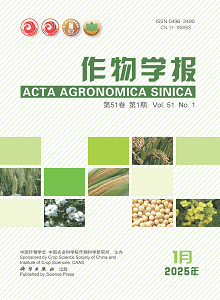江淮地区稻麦轮作制度对气候变暖的适应
引用次数: 0
摘要
:随着气候变暖的加剧,在过去的100年里,全球平均地表温度上升了近1°C。稻麦种植制度是江苏、安徽两省长江、淮河下游地区的主流种植制度,但其对气候变暖的适应程度尚不清楚。利用34个气象站和45个气象站历年的历史资料,分析了江苏省稻麦双熟区的气温上升特征和作物的酚学变化。结果表明,江淮地区的气温上升幅度南大于北,小麦季节较高,水稻成熟季节较低,3月份最高。在水稻季节,江南地区的播种期推迟了3.4 d 10a-1,淮南地区的抽穗期提前了2 d 10a-11,而淮北地区的收获期则推迟了6.2 d 10a-1。在小麦季节,江南地区的播种期推迟了6.4d10a-1,整个地区的抽穗和收获时间都趋于提前。水稻-小麦留茬期在华北缩短了4.6 d 10a–1,在江南缩短了6.9 d 10a-1。水稻和小麦生长期的平均温度没有显著变化,但在小麦季节增加了0.008–0.346 kg hm–2°C–1 10a–1。增温降低了长江以北和淮南地区的小麦产量,但增加了华北地区的小麦生产。总之,这些结果表明,江淮地区的稻麦种植制度正在逐渐适应气候变暖,合理改变播种期可以缓解气候变暖对作物产量的负面影响。研究结果可为适应气候变化的栽培和栽培技术创新提供参考。本文章由计算机程序翻译,如有差异,请以英文原文为准。
Adaption of rice–wheat cropping system to climate warming in Jianghuai area
: As the climate warming is increasing, the global average surface temperature has risen by nearly 1°C in the past 100 years. Rice-wheat cropping system is the mainstream cropping system in the lower reaches of the Yangtze River and Huaihe River in Jiangsu and Anhui provinces, but its adaptation to climate warming is still unclear. We analyzed the characteristics of temperature rise and crop phenological changes in the rice–wheat double cropping area of Jiangsu using the historical data from 34 meteorological stations and 45 phenological stations over the years. The results revealed that the range of temperature increase in Jianghuai area was higher in the south than in the north, higher in wheat season and lower in rice ripe season, and the highest in March. In the rice season, the sowing date in Jiangnan was delayed by 3.4 d 10a –1 , the heading date in Huainan was advanced by 2 d 10a –1 , and the harvest date in Huaibei was delayed by 6.2 d 10a –1 . In the wheat season, the sowing date in Jiangnan was delayed by 6.4 d 10a –1 , and the heading and harvest time tended to be earlier in the whole region. The rice–wheat stubble stage was shortened by 4.6 d 10a –1 in Huaibei and 6.9 d 10a –1 in Jiangnan. The average temperature of rice and wheat during growth period had no significant change, but in wheat season increased by 0.008–0.346 kg hm –2 °C –1 10a –1 . Warming decreased wheat yields in the north of Yangtze River and Huainan area, but increased wheat yield in Huaibei area. In summary, these results indicated that the rice-wheat cropping system in Jianghuai was gradually adapting to the climate warming, and the negative effects of climate warming on crop yield could be alleviated by reasonably changing sowing date. Our findings can provide reference for climate change adaptation cultivation and cultivation technology innovation.
求助全文
通过发布文献求助,成功后即可免费获取论文全文。
去求助
来源期刊

作物学报
Agricultural and Biological Sciences-Agronomy and Crop Science
CiteScore
1.70
自引率
0.00%
发文量
89
期刊介绍:
The major aims of AAS are to report the progresses in the disciplines of crop breeding, crop genetics, crop cultivation, crop physiology, ecology, biochemistry, germplasm resources, grain chemistry, grain storage and processing, bio-technology and biomathematics etc. mainly in China and abroad. AAS provides regular columns for Original papers, Reviews, and Research notes. The strict peer-review procedure guarantees the academic level and raises the reputation of the journal. The readership of AAS is for crop science researchers, students of agricultural colleges and universities, and persons with similar academic level.
 求助内容:
求助内容: 应助结果提醒方式:
应助结果提醒方式:


